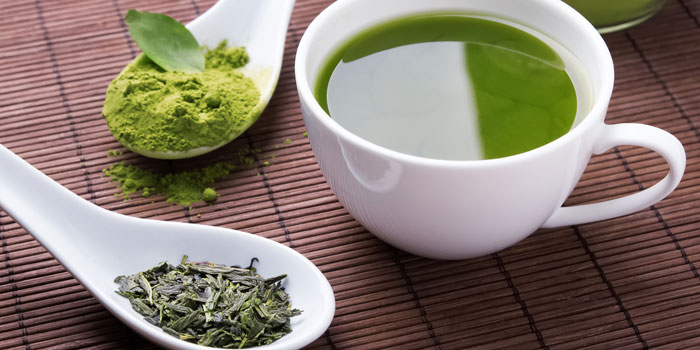
Pronounce it: green tee
Green tea is precisely what it says. It is the green leaf tips of the tea plant, camellia sinensis, that have been dried without any cutting or tearing (which encourages the leaf to oxidise or ferment, turn brown and to develop bigger, bolder more acidic flavours through the accompanying development of caffeine.) The whole leaves can be cut after drying and will not then change colour or ferment.
Accordingly, green tea’s basic flavour is also ‘green’ and leafy yet because tea, like coffee bushes and cocoa trees, reflects the soil and climate in which it is grown, green tea can be fresh and citrussy or heavy and oily – and most things in between. Today, green teas are also available with added flavourings, which many find more acceptable. Jasmine tea is usually based on green tea.
Green teas retain many antioxidants that would disappear if they were fermented, but as they have little caffeine content, their main appeal is as a warm or hot drink that relaxes rather than stimulates the system.
Only trusted recommendation and experiment will reveal the type of green tea that you like best.
Read our guide on the health benefits of green tea.
Availability
Widely available in shops; there are also many specialist suppliers online.
Choose the best
The range is enormous. Best to buy first from a reputable store, assess what you like and dislike, and then go to a specialist website that clearly describes their offering and choose accordingly.
Store it
Like all teas, green tea should be kept cool, in an airtight container and away from strong smells, otherwise pungent or constant cooking smells will be absorbed.
Cook it
Read the label. High quality green teas from such famed sources as Dragons Well are traditionally made in very small quantities, a few small cups at a time. It’s best to follow that example, which is based on centuries of experience. Many, if not most, green teas can also be brewed more than once, usually for a decreased amount of time and the continuing change of appearance and taste of the liquor is considered an important part of each tea’s appeal.
Many green teas marketed today have been chosen to appeal to the West’s tea-making styles, including tea bags. Follow the instructions.
Matcha is a style of green tea that is ground into a fine powder, used in the formal Japanese tea ceremony. Although green tea is never served with milk, Western chefs and cooks increasingly use it (especially matcha) in creams, jellies, chocolate and chocolate fillings, ice creams, sorbets and sauces, which can be a welcome, original contrast to other flavours but when overused it is undoubtedly bitter and thus an idea too far.
Be the first to comment on "Green tea"